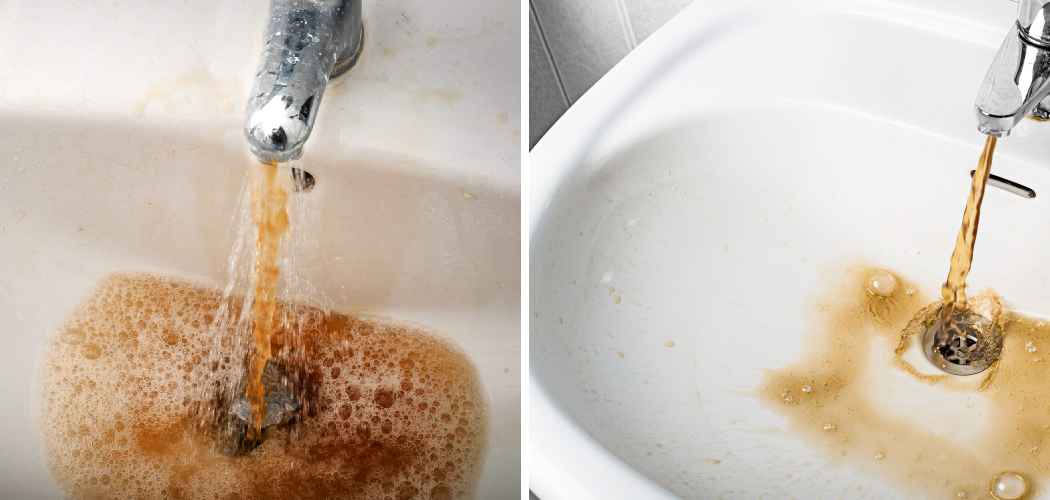Dealing with rust in tap water can be frustrating and concerning, as it not only affects the taste and appearance of the water but also raises questions about its safety.
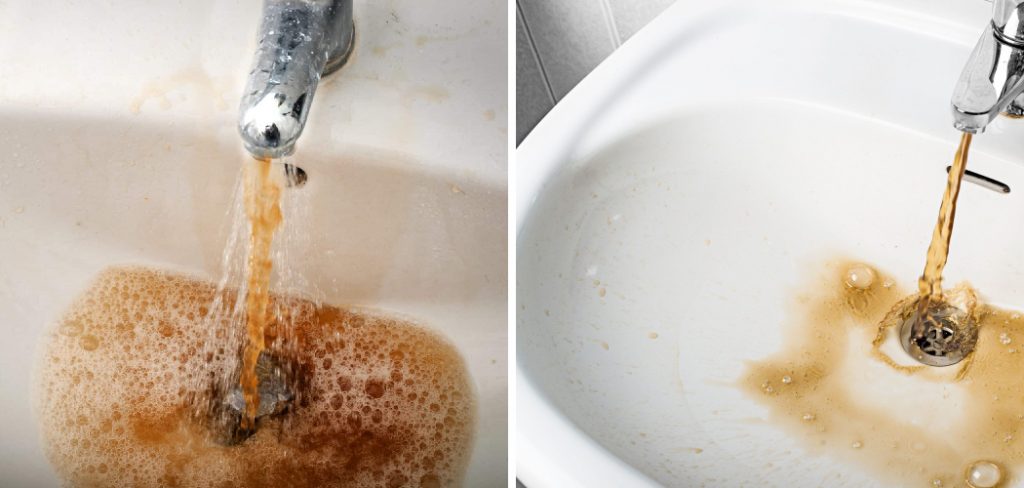
Fortunately, there are effective methods to remove rust from tap water and improve its quality. In this article, we’ll explore various techniques and solutions for how to remove rust from tap water.
From simple home remedies to advanced filtration systems, we’ll cover everything you need to know to ensure clean, rust-free water for drinking, cooking, and household use.
By understanding the causes of rust in tap water and implementing appropriate removal methods, you can enjoy clear, odor-free water that’s safe for consumption and other everyday activities.
Importance of Clean and Safe Tap Water
Clean and safe tap water is crucial for maintaining good health and well-being. Water is a fundamental resource that our bodies rely on for hydration, digestion, and numerous bodily functions.
When tap water is contaminated with rust or other impurities, it can pose serious health risks, including gastrointestinal problems and long-term effects from consuming harmful metals. Furthermore, clean water enhances the flavor of beverages and food, making it more enjoyable and safe to consume.
Besides health benefits, clean tap water is essential for household tasks such as cooking, cleaning, and laundry, ensuring that appliances and plumbing systems remain free from corrosion and damage. Therefore, ensuring the cleanliness and safety of tap water should be a priority for every household.
Common Causes of Rust in Tap Water
Understanding the common causes of rust in tap water is essential for identifying and addressing the issue effectively. Rust in tap water typically results from the presence of iron particles, which originate from several potential sources:
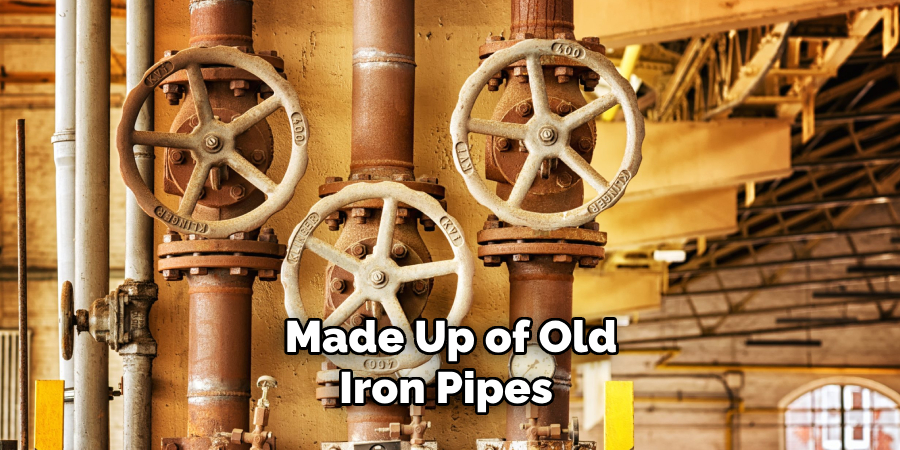
- Aging Infrastructure: Many water supply systems are made up of old iron pipes that corrode over time. As these pipes degrade, rust particles can flake off into the water supply, causing discolouration and an unpleasant taste.
- Corrosion of Household Plumbing: Similar to the municipal water supply, the plumbing in homes, especially those with older iron pipes, can also corrode. This internal rust can leach into the household water, further exacerbating the problem.
- Water Source: The natural water source itself might contain high levels of iron. Groundwater, in particular, can pick up iron from the surrounding soil and rocks. This iron then gets carried along when the water is pumped into homes.
- Water Treatment Chemicals: Sometimes, the chemicals used in water treatment can react with iron pipes, accelerating corrosion and leading to an increase in rust particles in the tap water.
Identifying the root cause of rust in your tap water is the first step in resolving the issue. Depending on the source, various treatments and solutions can be applied to eliminate rust and ensure a clean, safe water supply. Understanding these causes will help you take appropriate action to protect the health and well-being of your household.
Understanding Rust in Tap Water
Rust is a common term for iron oxide, a reddish-brown compound that forms when iron reacts with oxygen and moisture. When rust particles appear in tap water, it often signifies the presence of corroding iron or steel within the water supply system.
The presence of rust can lead to several problems, including discolored water, metallic taste, and potential health risks if consumed over long periods. Rust in tap water can also stain laundry, dishes, and fixtures, causing inconvenience and additional cleaning efforts.
There are two primary forms of rust contamination in tap water:
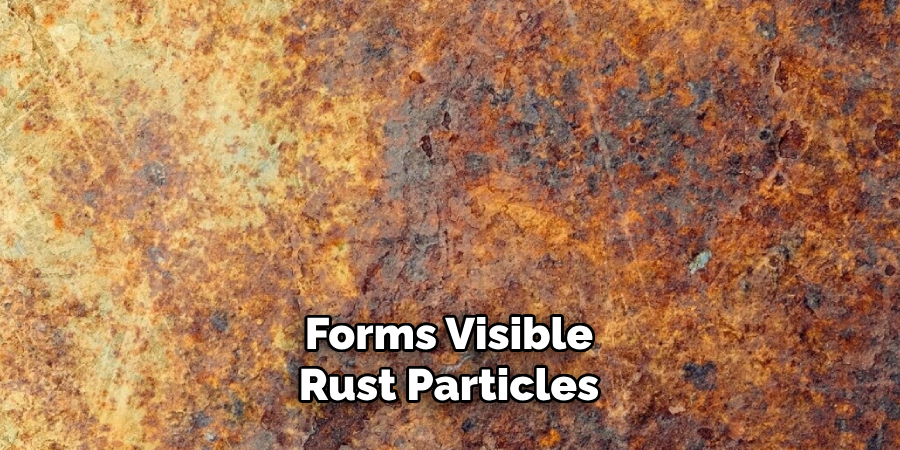
- Soluble Iron: This form of iron dissolves in water and usually goes unnoticed until it comes into contact with air, where it oxidizes and forms visible rust particles. Soluble iron often comes from groundwater that contains naturally occurring iron deposits.
- Particulate Iron: This type consists of tiny rust particles that break off from corroding iron pipes. These particles are usually visible in the water as reddish or brownish specks and can often be seen settling at the bottom of containers or sinks.
To effectively address rust in tap water, it’s crucial to determine whether the contamination is coming from the local water supply system or from within the household plumbing. Conducting a simple water test can help identify the type and concentration of iron present. Once identified, appropriate measures can be taken to treat and remove the rust, ensuring clean and safe tap water for your daily needs.
Sources of Rust Contamination in Water Supply Systems
Identifying the sources of rust contamination in water supply systems is critical for implementing effective solutions. Here are some primary sources where rust can infiltrate the water supply:
- Municipal Water Mains: Many cities have aging infrastructure composed of iron or steel pipes. These pipes are susceptible to corrosion over time, particularly if they are exposed to oxygen and moisture. As these pipes degrade, rust particles can enter the water supply, leading to discolored and unpalatable tap water.
- Old Water Tanks: Storage tanks used for holding municipal water before distribution can also be a source of rust. Older tanks, often made of iron or steel, can develop rust on their interior surfaces. This rust can then mix with the water and be carried into homes and businesses.
- Private Wells: For homes relying on private wells, the natural groundwater source might be high in iron content. As water is drawn up from these wells, it can bring iron particles along with it. These particles can then oxidize and form rust when they come into contact with air.
- Fire Hydrants and Main Breaks: The testing or use of fire hydrants and accidental breaks in the main water lines can disturb sediment and rust particles that have settled over time. This disruption can cause a temporary surge of rusty water to flow through the water system.
- Faulty Water Heaters: Water heaters can also contribute to rust in household water supplies. The internal components of water heaters, especially those made of iron or steel, can corrode over time. This corrosion can lead to rust contamination in both the hot and cold water lines of a home.
- Unlined Metal Pipes: Unlined iron or steel pipes still in use within some water distribution systems lack a protective lining to prevent rust formation. Over time, these pipes can severely corrode, resulting in significant rust contamination.
Understanding where rust is entering the water supply is the first step in addressing the issue. Targeted maintenance, replacement of aging infrastructure, and the use of appropriate filtration systems can significantly reduce rust contamination, ensuring cleaner and safer tap water for all.
Chemical Composition of Rust and its Impact on Water Quality
Rust, or iron oxide, is primarily formed through the reaction of iron (Fe) with oxygen (O₂) and moisture. The most common type of rust encountered is ferric oxide (Fe₂O₃), which gives rust its characteristic reddish-brown hue.
Another form that can occur under different environmental conditions is ferric hydroxide [Fe(OH)₃]. Rust formation is a natural process that occurs when iron undergoes oxidation, losing electrons in the presence of water and oxygen, which can profoundly impact water quality.
Impact on Water Quality
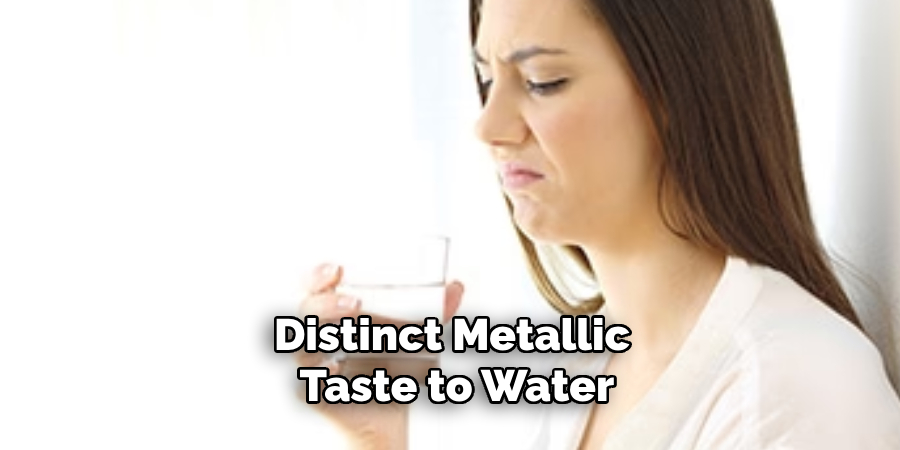
- Discoloration: One of the most immediate and noticeable effects of rust in water is discoloration. Water contaminated with rust often appears yellow, orange, or brown, making it visually unappealing and potentially alarming for users.
- Taste and Odor: Rust can impart a distinct metallic taste to water, which is often unpleasant and may affect the taste of beverages and food prepared with the water. In some cases, rust can also contribute to a musty or earthy odor.
- Staining: Rust particles in the water can cause staining of clothes, sinks, bathtubs, and other fixtures. These stains are notoriously difficult to remove and can lead to increased maintenance and cleaning efforts.
- Clogging and Maintenance Issues: Accumulated rust particles can lead to the clogging of pipes, faucets, and water filters. This not only reduces water flow but can also increase the wear and tear on plumbing systems, leading to higher maintenance costs.
- Potential Health Concerns: While small amounts of rust in drinking water are generally not considered harmful, prolonged exposure to high levels of iron can pose health risks. Iron bacteria, which thrive in environments rich in iron, can cause biofilms to form, potentially leading to gastrointestinal issues.
Understanding the chemical composition of rust and its subsequent impact on water quality highlights the importance of maintaining water systems and using appropriate treatments. Regular monitoring and proactive measures can help mitigate the adverse effects of rust, ensuring safer and more aesthetically pleasing tap water.
Health Risks Associated with Drinking Rusty Water
While rust in water is primarily a cosmetic issue, it does pose some potential health risks, especially if consumed in large quantities over extended periods. Understanding these risks is crucial for ensuring the safety of the water supply and protecting public health. Here are some of the key health concerns associated with drinking rusty water:

- Iron Overload: Consuming water high in iron can contribute to an excessive buildup of iron in the body, a condition known as hemochromatosis. Hemochromatosis can lead to serious health issues, including liver disease, heart problems, and diabetes. While dietary iron and water iron are absorbed differently, individuals who are genetically predisposed to iron overload must exercise caution.
- Gastrointestinal Issues: Rusty water can sometimes harbor iron bacteria, which thrive in environments abundant in iron. These bacteria produce a slimy biofilm that, if ingested, can potentially irritate the gastrointestinal tract. Symptoms may include nausea, vomiting, stomach cramps, and diarrhea.
- Skin and Eye Irritation: Using rusty water for bathing or washing can cause skin irritation or exacerbate conditions like eczema and dermatitis. Rust particles may also lead to eye irritation if they come into contact with delicate eye tissues.
- Encouragement of Pathogen Growth: The presence of rust particles can create environments conducive to the development of other harmful microorganisms. While rust itself is not usually dangerous, the biofilms that iron bacteria form can shelter pathogens like E. coli or Legionella, posing additional health risks.
- Interference with Kidney Function: Long-term consumption of water with high iron content may stress the kidneys, which are responsible for filtering excess minerals from the bloodstream. This can potentially lead to impaired kidney function, particularly in individuals with underlying kidney conditions.
- Reproductive Health: There is limited evidence suggesting that very high iron levels in water might affect reproductive health, though more research is needed. Pregnant women or those trying to conceive should be aware of their overall iron intake from all sources, including water.
In summary, while occasional drinking of rusty water is unlikely to cause significant harm, regular monitoring and addressing high iron levels is important to safeguard public health. Implementing appropriate water treatment and filtration solutions can effectively reduce the risks associated with rusty water, ensuring a safe and clean water supply for all.
10 Methods How to Remove Rust from Tap Water
1. Boiling Water
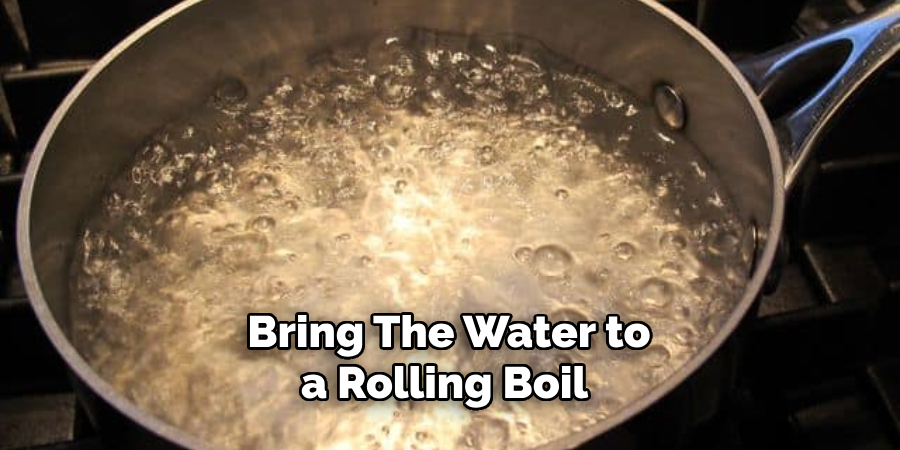
Boiling tap water is one of the simplest and most effective methods for removing rust. Bring the water to a rolling boil for at least five minutes to kill any bacteria and oxidize the iron, causing the rust particles to settle at the bottom of the pot. Allow the water to cool before carefully pouring it into a clean container, leaving the sediment behind.
2. Using a Water Filter
Investing in a quality water filter designed to remove rust and other contaminants is an effective long-term solution. Look for filters with activated carbon, reverse osmosis, or ion exchange technologies, as these are known to effectively remove iron and rust particles from tap water. Install the filter according to the manufacturer’s instructions and replace the filter cartridges regularly to maintain optimal performance.
3. Adding Oxalic Acid
Oxalic acid, commonly found in rust removal products, can also be used to remove rust from tap water. Add a small amount of oxalic acid to the water and stir well to dissolve the rust particles. Allow the water to sit for a few hours, then strain it through a fine mesh sieve or filter paper to remove any remaining sediment.
4. Using Lemon Juice and Salt
A natural and non-toxic method for removing rust from tap water involves using lemon juice and salt. Squeeze the juice of one lemon into a pitcher of tap water and add a tablespoon of salt.
Stir the mixture well and let it sit for several hours or overnight. The citric acid in the lemon juice helps dissolve the rust, while the salt acts as a mild abrasive to help scrub away stubborn stains.
5. Installing a Whole House Water Filtration System
For homes with severe rust issues in tap water, installing a whole house water filtration system may be the best option.
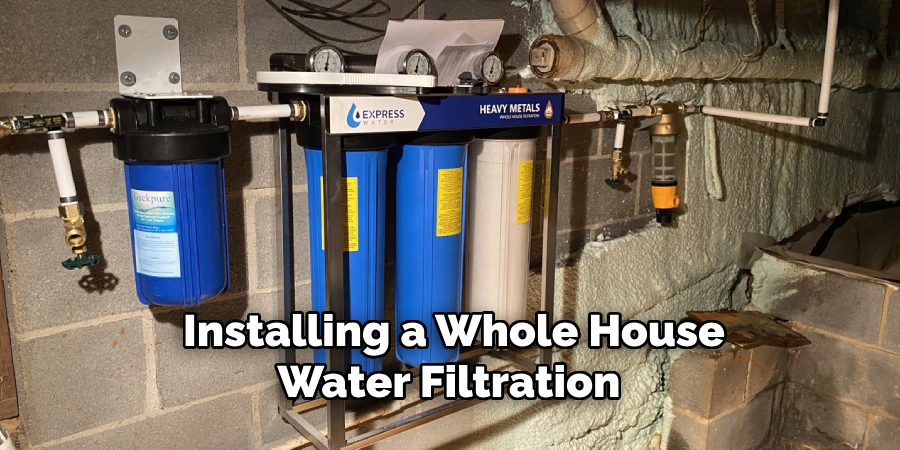
These systems are installed at the point where water enters the home and filter out rust, sediment, and other contaminants before the water reaches any faucets or appliances. Consult with a professional plumber to determine the best type of filtration system for your home’s needs and budget.
6. Using Vinegar
Vinegar is another natural and inexpensive option for removing rust from tap water. Fill a container with tap water and add a generous amount of vinegar, enough to create a strong vinegar solution.
Let the water sit for several hours or overnight, then pour it through a fine mesh sieve or filter paper to remove any remaining rust particles. Vinegar’s acidic properties help dissolve rust and leave tap water clean and clear.
7. Installing a Water Softener
In some cases, high levels of minerals in tap water can contribute to rust buildup. Installing a water softener can help reduce mineral content and prevent rust from forming in the first place.
Water softeners use ion exchange technology to remove calcium, magnesium, and other minerals from tap water, resulting in softer, cleaner water that’s less likely to cause rust stains.
8. Using Baking Soda
Baking soda, or sodium bicarbonate, can also be used to remove rust from tap water. Add a tablespoon of baking soda to a pitcher of tap water and stir well to dissolve. Let the water sit for several hours or overnight, then pour it through a fine mesh sieve or filter paper to remove any remaining rust particles.
Baking soda’s mild abrasive properties help scrub away rust stains and leave tap water clean and fresh.
9. Installing a Point-of-Use Water Filter
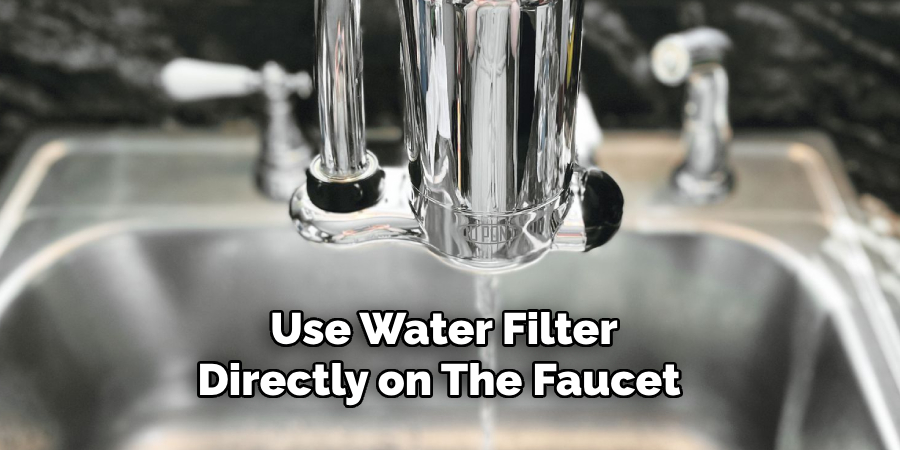
If you’re looking for a more targeted solution, consider installing a point-of-use water filter directly on the faucet or under the sink. These filters are designed to remove specific contaminants, including rust, chlorine, and sediment, from tap water at the point of use. Choose a filter with a high micron rating to effectively remove rust particles while maintaining water flow and pressure.
10. Using Commercial Rust Removers
Commercial rust removers are readily available at hardware stores and home improvement centers and can be effective for removing rust from tap water. Follow the manufacturer’s instructions carefully when using these products, as they may contain strong chemicals that can be harmful if not used properly.
Use caution and wear protective gloves and eyewear when handling commercial rust removers, and ensure adequate ventilation in the area where they are being used.
Conclusion
In conclusion, addressing rust contamination in tap water is essential for maintaining a healthy and safe water supply for you and your family.
By following the methods outlined in this guide, from DIY solutions like boiling water and using filters to installing whole house filtration systems and seeking professional assistance when needed, you can effectively remove rust particles and minimize health risks associated with rust-contaminated water.
It’s crucial to regularly monitor water quality, test for rust levels, and take preventive measures to prevent rust buildup in plumbing systems. Thanks for reading, and we hope this has given you some inspiration on how to remove rust from tap water!
